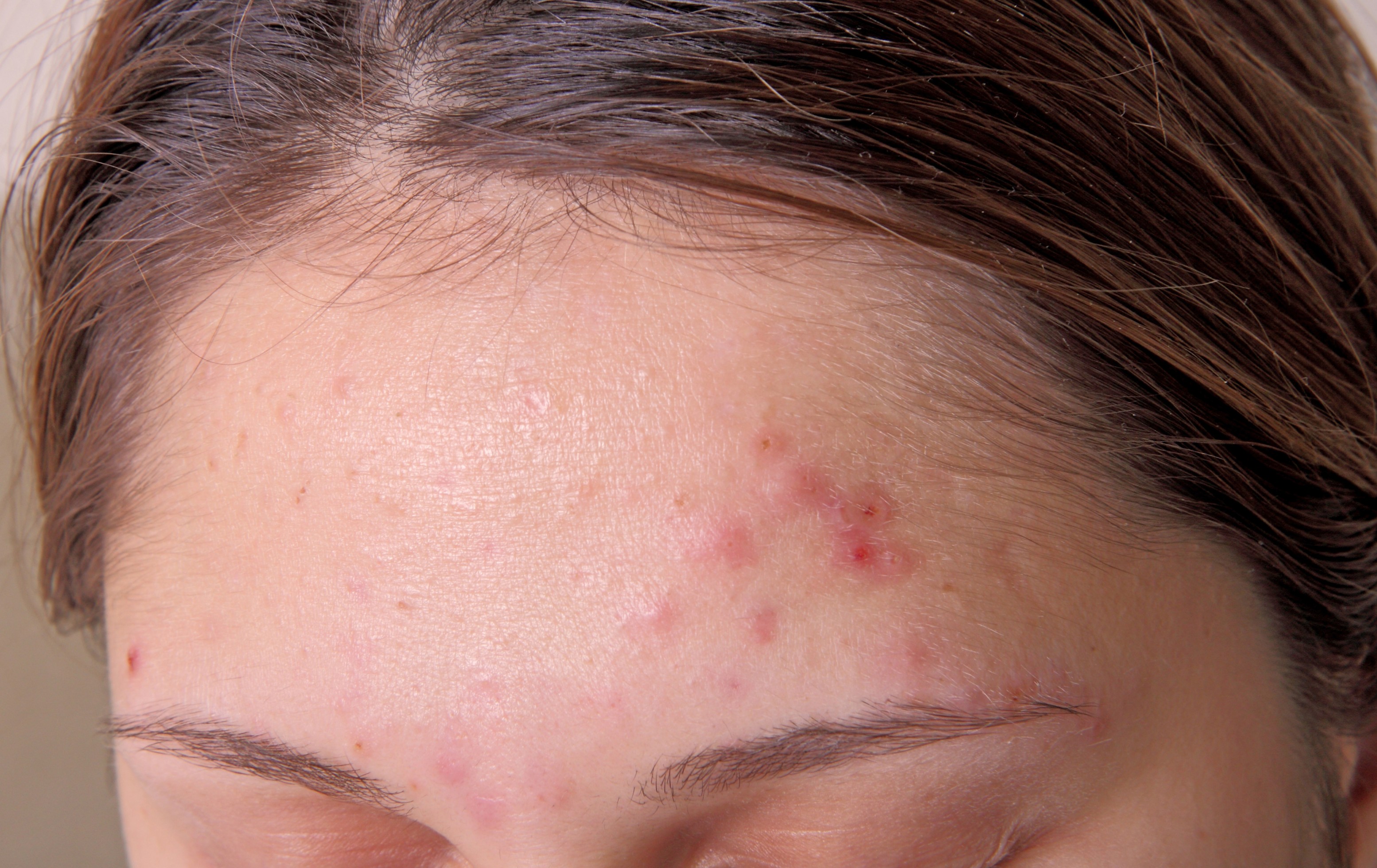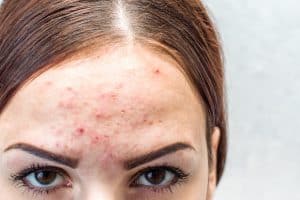As much as you love your hair, the truth is there’s no time to care for it. Thanks to the hustle and bustle every day, the only option left is to turn a blind eye towards your hair. Though that doesn’t bring an end to your hair issues; instead, it just multiplies. One such common concern amongst the endless list of issues is decreasing hair density. Keep reading the blog to know what hair density is, how to measure it and the ways that can help you increase it.
What Does Hair Density Mean?
It is the number of hair strands you have on your head per square inch, or you can also define it as how densely packed your hair follicles are on your scalp. Your hair density affects the overall shape and hair volume. You can easily find out the suitable products, hairstyles and haircut based on your hair density.
Fun Fact:
On average, a person has about 1000-1200 hair strands per square inch on their scalp. Simultaneously, an average person sheds around 50 to 100 hair strands per day. An important thing to remember is that dense hair can be both thin as well as thick. E.g. You may have thin hair with high hair density or thick hair with a low hair density.
How Can You Figure Out Your Hair Density?
i. By Measuring it at Home
You can start counting individual hair strands or maybe use a microscope. We are kidding; you don’t need to do that. There are better and practical ways to figure this out.
# 1st Method
You can find out your hair density by visually examining it.
- If your scalp is easily visible without moving your hair, you have low hair density.
- In case it’s hard to see your scalp, you have high hair density.
- You have medium hair density, if you had to move your hair slightly.
# 2nd Method
The second method is to take the ponytail test. Tie your hair into a ponytail and check the thickness/circumference.
- If your ponytail is 4 or more inches, then you have high-density hair
- If it is less than 2 inches, you have low hair density.
- Lastly, if it is 2 to 3 inches, you have medium hair density.
ii. Determining Hair Density Through Scientific Methods
Phototrichogram is a quick technique that enables researchers to calculate the growth phase of your hair (individual hair) and hair density. Another method is an imaging technique known as trichoscopy that allows researchers to evaluate hair density.
How Can You Care for Your Hair Based On Hair Density?
Hair density plays a vital role in making you understand how to nourish your hair. Apart from this, your hair type, length, texture etc., also play an essential role.
High-Density Hair
You can use heavy styling products such as hair butter and gels to make your hair manageable. If you are bothered by frizzy hair, try oils and serums. Avoid going for blunt cuts; rather, opt for layering.
Medium-Density Hair
For this hair type, you don’t need to do a lot of things. Stick to products that keep your hair strong and healthy. You can try a lot of different hairstyles on your hair.
Low-Density Hair
If you have low hair density, choose products that add volume to your hair like mousse and volumising shampoos. Avoid heavy products as they can make your hair appear flat and dull.
Can You Increase Your Hair Density?
Your genes, hormonal factors, and the way you nurture your hair determine your hair density. You can do nothing to change your hormones or genetics, but given below are a few things you can try.
1. Have a Healthy Diet
Whatever you eat affects your health as well as your hair. You have to ensure that you are taking a balanced diet with all the adequate nutrients that promote hair growth. Your diet should include a lot of protein, biotin, iron, zinc, vitamins and minerals – e.g. Green leafy vegetables, fruits, nuts, fish, eggs, lentils etc.
2. Indulge In Relaxing Oil Massages
Oil massages on the scalp are a great way to feel refreshed and maintain your hair health. Regularly oil application can boost blood flow on your scalp that aids in moisturising and promoting hair growth. It also strengthens your hair roots leading to an increase in hair density.
Various hair oils are available such as castor oil, coconut oil, sesame oil, olive oil etc. You can massage with any of these oils once or twice a week, depending on your hair type. Before using any oil, ensure that you aren’t allergic to any of them. You can take a patch test to check if it is safe for you to use or not. If you face any adverse reactions or allergy, seek medical help immediately.
3. Keep Stress at Bay
It’s hard to stay away from stress in current times but try and minimise your stress levels. Enjoy activities such as reading, singing, painting, talking to loved ones etc. The aim is to find something that decreases your stress levels and brings happiness to your life. Some researchers claim that there could be a link between stress and hair growth. Though, a lot more evidence is required to prove this.
4. A Good Hair Care Routine
You can never have healthy hair without a good hair care routine. Wash your hair once or twice a week according to your hair type. Do not over-wash your hair, as it can take away all the natural oils and cause dryness. Always use a conditioner and opt for mild shampoos. Brush your hair gently by using a wide-toothed comb or one with boar bristles.
5. Natural Remedies
Henna
You can take about half a cup of henna powder, one-fourth cup of warm water and some coconut oil. Make a paste and apply the henna paste all over your hair. Leave it for about an hour and wash it later. It helps increase hair volume and makes your hair soft.
Aloe Vera Gel
Apply some aloe vera gel on your hair and scalp. Massage your scalp gently and leave it for around 60 minutes. Later, wash your hair thoroughly. Aloe vera strengthens your hair follicles and adds moisture to your hair.
6. Hair Transplantation By FUE & FUT
FUE stands for follicular unit extraction, whereas FUT means follicular unit transplant. These are two methods of hair transplantation. You can talk to a dermatologist to explain the procedure, precautions and safety measures. If there are other queries and issues, it is always better to reach out to a doctor. She/he can examine your condition and offer proper medication and treatment.
Summing Up
While hormones and genetics cannot be altered, you need to know that several techniques can help improve your hair density. Eat healthy foods, stay happy and take some time to look after your hair. If you aren’t getting the desired results despite trying everything or want to get to the root cause, reach out to a dermatologist. You can get a customised treatment as per your hair condition and type.
Disclaimer
The natural remedies mentioned in the blog are the widely popular ones. It is in no way a substitute for medical advice, treatment or diagnosis. Avoid using these if you have sensitive skin or are prone to allergies.
Before trying any natural remedy, always test a small quantity on your skin to check for any adverse reactions or allergy to any particular ingredient. In case of emergency or any reaction, immediately connect with a doctor who can offer the right treatment.
FAQs
- Which oil helps increase hair density?
You can use oils such as coconut oil, almond oil, castor oil, olive oil etc. No oil can instantly increase hair density, but it does stimulate blood flow on your scalp and removes dryness from your hair. Resulting in stronger hair roots and improvement in hair growth.
- Which fruit can help in hair growth?
Most of the fruits are rich in nutrients that can aid in hair growth. Therefore, consume whatever is available near you and enjoy the benefits.
- Which vitamins are good for hair?
Vitamin A, B, C, D and E are excellent for hair. Look for food that has these vitamins to make your hair healthier and shinier.
- Which is the best treatment to increase hair density?
This would depend on the severity of the issue and what your hair goals are. Read the blog to find out more. You may also reach out to a dermatologist for specific guidance regarding treatment.

